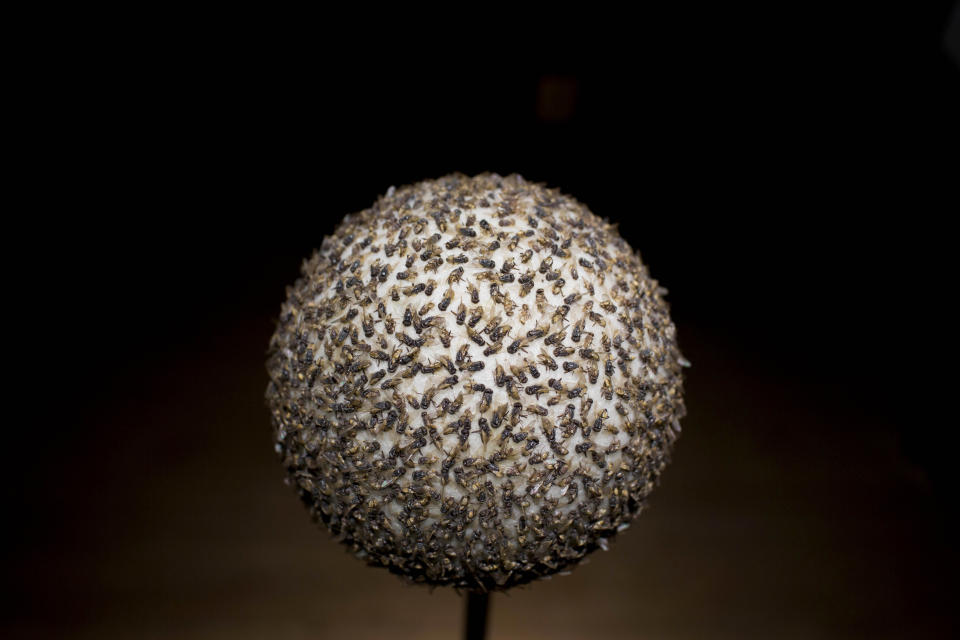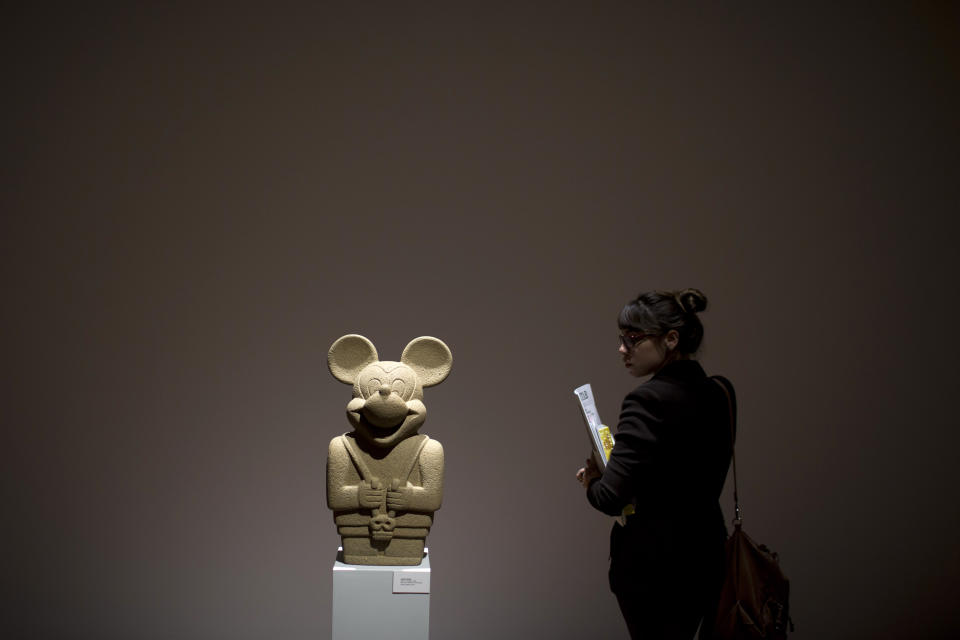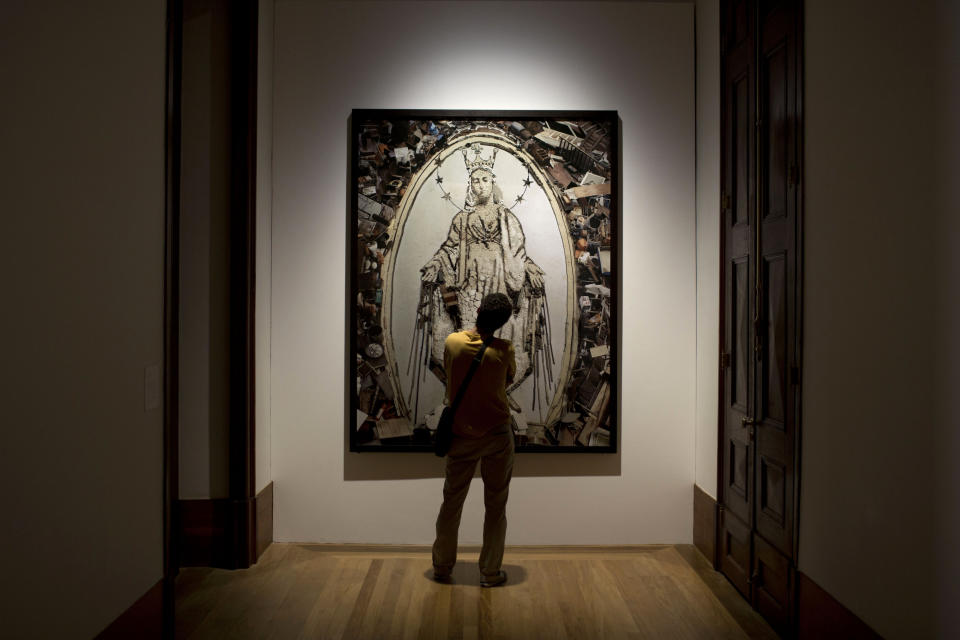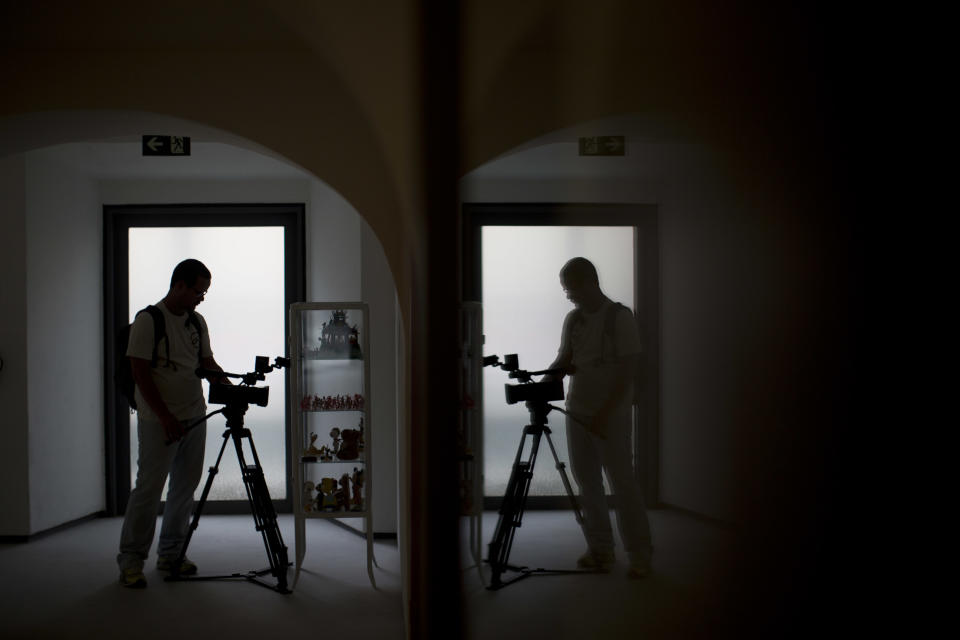Museum to showcase contemporary Latin American art
RIO DE JANEIRO (AP) — Long a cultural backwater, Rio de Janeiro has taken another leap toward becoming an art hot spot with this week's opening of a museum built around one of the world's premier collections of contemporary Latin American art.
Casa Daros, a 12,000-square-meter (129,000-square-foot) space in an impeccably renovated 1866 mansion, will house some of the works acquired the past 13 years by Zurich-based collector Ruth Schmidheiny. Working with German curator Hans-Michael Herzog, she combed Latin America at a time when the art world paid little attention to the region. The 1,200 pieces they bought came from 117 artists, most of them still alive and working.
It was easy pickings, Herzog told journalists at a news conference Wednesday ahead of the museum's public opening Saturday.
"In Europe, there was zero interest because people there knew nothing about Latin American art — Latin American literature, yes, but contemporary art, no," Herzog said. "We started to acquire, which was so easy because the field was so very rich."
Stored in a facility in Zurich, many of the pieces have been shown to the public in twice-yearly exhibits there, but Schmidheiny and Herzog dreamed of having a place to show off the collection in Latin America as a way to spark dialogue among artists across the diverse region.
Initially they planned to put the museum in Havana, but talks with the Cuban government failed. Given the violence that plagued Colombia in the early 2000s, the political situation in Venezuela and the lack of basic infrastructure in the Andean countries, they narrowed their list of possible host cities to Buenos Aires, Argentina, and Sao Paulo and Rio in Brazil, Herzog said.
But both Sao Paulo and Buenos Aires already had bustling arts scenes, so in 2006 they settled on Rio, which was still plagued by drug gang violence and resolutely off the radar of the art world.
That's since changed, with the pacification of dozens of Rio's "favela" hillside slums, the discovery of offshore oil deposits that have flooded the city with petrodollars and Rio's role as host for the 2014 soccer World Cup and the 2016 Olympic Games. The art world is now eager to get a toehold in this burgeoning and lucrative market, and Rio officials hope to capitalize on their moment in the spotlight to turn the laid-back beach city known mainly for its over-the-top Carnival celebrations into a world-class metropolis and Latin America's newest arts hub.
Casa Daros is but the latest of a host of new museums springing up in Rio. Earlier this month saw the inauguration of the Rio Art Museum, which is dedicated to art celebrating Rio's picture-postcard cityscapes. Two other big museums, one dedicated to science and the other to sounds and images, are scheduled to open in the coming years.
"Of course we had no idea that Rio was going to become such a hotspot when this project originated," Herzog said. "But it's, of course, fantastic for us. When it comes to museums, the more the merrier."
Casa Daros' status as a privately financed project distinguishes it from the other new museums, most of which have received funds from municipal or other public coffers. All of the money that's gone into Casa Daros, from the $8 million price tag of the building to the $33.5 million that went into its restoration to the entire operating budget for the foreseeable future, comes from private sources, museum officials said.
The inaugural exhibition, running through Sept. 8, features Colombian painters, photographers, sculptors and videographers from the 1990s and 2000s, a time when the country's drug violence was at a fevered pitch. Standout pieces include a series of faux pre-Columbian clay sculptures featuring Mickey and Minnie Mouse and other Disney characters by Nadin Ospina and a time-lapse video by Juan Manuel Echavarria documenting the decay of a fine porcelain plate into a pile of white powder that looks suspiciously like cocaine.
Herzog said her team chose to focus on Colombia for the initial show because Colombian art is "almost unknown" here in neighboring Brazil, an illustration of the lack of mutual knowledge and understanding among the national art scenes across Latin America that Casa Daros aims to bridge.
"We don't want to be a just another museum," she said. "We want it to be a meeting place from which something more emerges — synergy."






